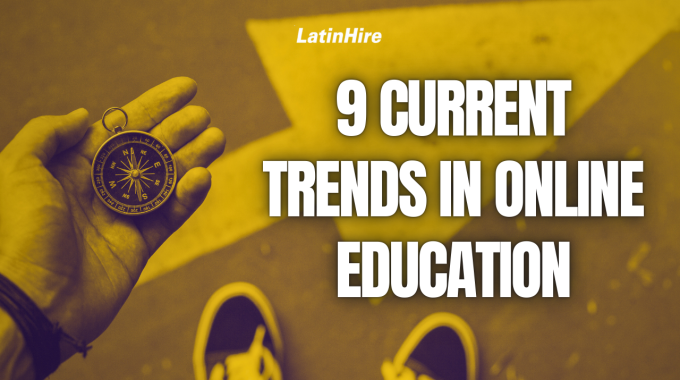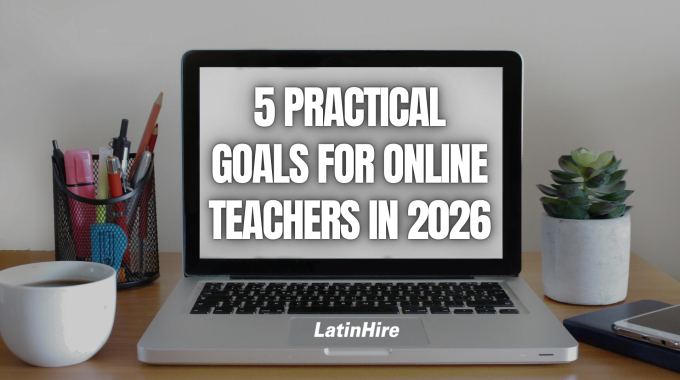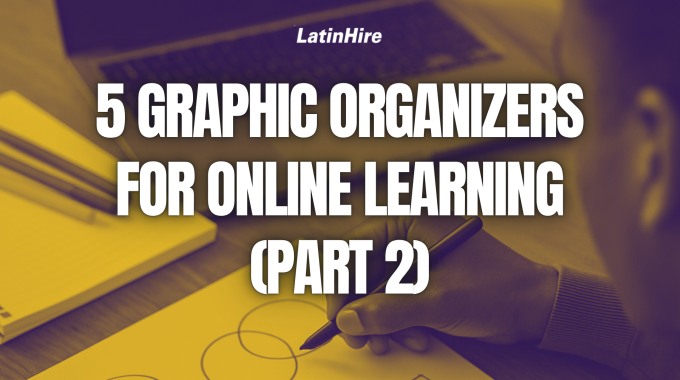The start of the new year is a motivating time to reflect, reset, and write…

9 Current Trends in Online Education
Online learning is still a fairly new phenomenon in the history of education, but it’s evolving fast, and as educators, it’s crucial to keep up to speed so we can provide the best possible learning experience for students. These changes in online learning are driven by technological advancements, shifts in teaching methods, and also changes in learners’ expectations.
Many higher education institutions are offering more online programs as students want to have the flexibility of learning from home and not having to commute to class daily or rent near campus. K-12 students are also increasingly taking more online courses to supplement their school learning or to take part in extracurricular activities.
Whether you teach online or in a traditional classroom, staying informed about the latest trends in online education will help you engage students and deliver effective lessons. This segment of the education industry is only expanding. Being on top of the trends will allow you to best serve your students and to deliver effective and engaging lessons whatever changes may come.
Let’s take a look at some of the most significant trends shaping online education today.
1) Artificial Intelligence (AI) and Personalized Learning

AI is making its way into online education in more than one way. From AI-powered learning systems to chatbots that assist students with questions, AI is personalizing the learning experience. Algorithms analyze student performance data and adapt course content to individual learning needs and styles. With all that said, there is still the need for real teachers to provide human interaction, support, and deeper context that AI tools cannot fully replicate. While AI can efficiently handle repetitive tasks and offer personalized content, real teachers are essential for fostering critical thinking, encouraging creativity, and addressing complex questions.
How can educators leverage AI: Consider incorporating AI tools like adaptive learning platforms or AI chatbots into your teaching practice. These tools can provide personalized feedback and support to your students.
2) Microlearning and Bite-Sized Content
Attention spans are shrinking with each new generation, which has led to the rise of microlearning in online education. Instead of traditional long-form lessons, educators are breaking down content into short, digestible chunks. These bite-sized lessons, often no more than 10 minutes, allow learners to absorb information quickly and retain it longer. The popularity of platforms like TikTok, where students spend hours consuming short, engaging content, reflects this shift. Rather than resisting this trend, educators are adapting by creating educational content in micro doses.
How educators can leverage microlearning: Break down complex lessons into micro-units and pair them with interactive activities. A lesson can be broken down into 10-minute segments with time given between segments for students to reflect and apply what they learned.
3) Gamification of Learning
Gamification has proven to be an effective tool for increasing student engagement. By incorporating game components, such as point scoring, leaderboards, and awards, into lessons, students become more motivated to complete tasks and progress through the curriculum. This trend is quite prevalent in online learning among young learners, but can also be effective in adult education.
How educators can leverage gamification: Use competitions and rewards throughout the learning process to keep students engaged and focused. Create fun ways of assessment, such as using Kahoot and other platforms to check student understanding.
4) Hybrid Learning Models

The COVID-19 pandemic accelerated the adoption of hybrid learning models, where students learn both online and in person, and this approach seems here to stay. Many students, especially in higher education, prefer that their school has an online learning model because it offers the flexibility to balance their studies around other life commitments. Although the pandemic is becoming a thing of the past and formal education is returning to the physical classroom, the hybrid model is becoming the norm in many institutions.
How educators can leverage hybrid learning: Develop a hybrid curriculum that blends synchronous and asynchronous learning. Record live classes to be made available online and use interactive materials through platforms like Google Classroom or Moodle.
5) Learning Management Systems Evolution
Learning Management Systems (LMS) have long been the foundation of online education, but now they are far more advanced than ever. LMS platforms are becoming more user-friendly, offering seamless integration with other tools like Google Docs, YouTube, and third-party apps. They allow educators to organize and streamline their lessons while offering advanced analytics to track student progress and engagement in real-time.
How educators can leverage learning management systems: Stay up-to-date with the latest features offered by your LMS. Explore tools that integrate with your existing platform to enhance the learning experience, such as embedding interactive video lessons or incorporating AI-driven analytics for better student insights.
6) Increased Focus on Soft Skills
While technical skills have always been a focus in online education, there’s a growing emphasis on soft skills such as communication, problem-solving, and teamwork. Online education platforms are incorporating more soft skills training into their curriculums, preparing learners for the demands of the modern workforce. Employers increasingly value these soft skills, recognizing that success in today’s dynamic work environment requires adaptability, collaboration, and emotional intelligence.
How educators can leverage soft skills: Incorporate soft skills training into your online lessons through collaborative projects, peer reviews, and group discussions. Encourage students to develop their emotional intelligence alongside their academic and technical knowledge.
7) Immersive Learning through VR and AR
Virtual Reality (VR) and Augmented Reality (AR) are making significant strides in online education. These technologies allow students to immerse themselves in a 3D environment, bringing abstract concepts to life. For instance, medical students can practice surgeries in a virtual operating room, or history students can tour ancient civilizations through VR. AR, on the other hand, overlays digital elements into the real world, enhancing students’ interactions with their physical surroundings. Engineering students can visualize complex machinery in 3D or biology students can explore the human body in layers through AR.
How educators can leverage VR and AR: If budget and access allow, explore VR and AR tools that can enhance your subject matter. For example, platforms like Nearpod offer VR experiences in subjects ranging from science to history. AR apps like Google Lens can be used to supplement learning with interactive elements.
8) Social Learning and Collaboration
Learning has become increasingly social in the digital age. Online education platforms now offer more opportunities for student collaboration, encouraging learners to work together in virtual environments. Tools like shared digital whiteboards, discussion forums, and group projects foster a sense of community and peer support. Video conferencing and live chat features also enable real-time interaction, allowing students to engage with peers and instructors just as they would in a traditional classroom.
How educators can leverage social learning: Incorporate social learning strategies in your online teaching by facilitating group projects, discussion forums, and peer feedback sessions. Use breakout rooms on Zoom to allow students to share their ideas in smaller groups.
9) Focus on Accessibility and Inclusivity

As online education becomes more widespread, there’s an increasing focus on making it accessible to everyone, including students with disabilities. Features such as screen readers, captioning, and customizable font sizes are becoming standard in online learning platforms. Inclusivity also extends to diverse content that represents different cultures and experiences, ensuring that all students feel seen and heard in the virtual environment.
How educators can leverage accessibility trends: Ensure that your online content is accessible by using platforms that support assistive technologies and offer materials in various formats (audio, visual, and text). Create an inclusive environment by incorporating diverse perspectives and content in your lessons.
We hope you enjoyed this article. What other trends have you noticed in online education over the past few years? Share them in the comments below!



